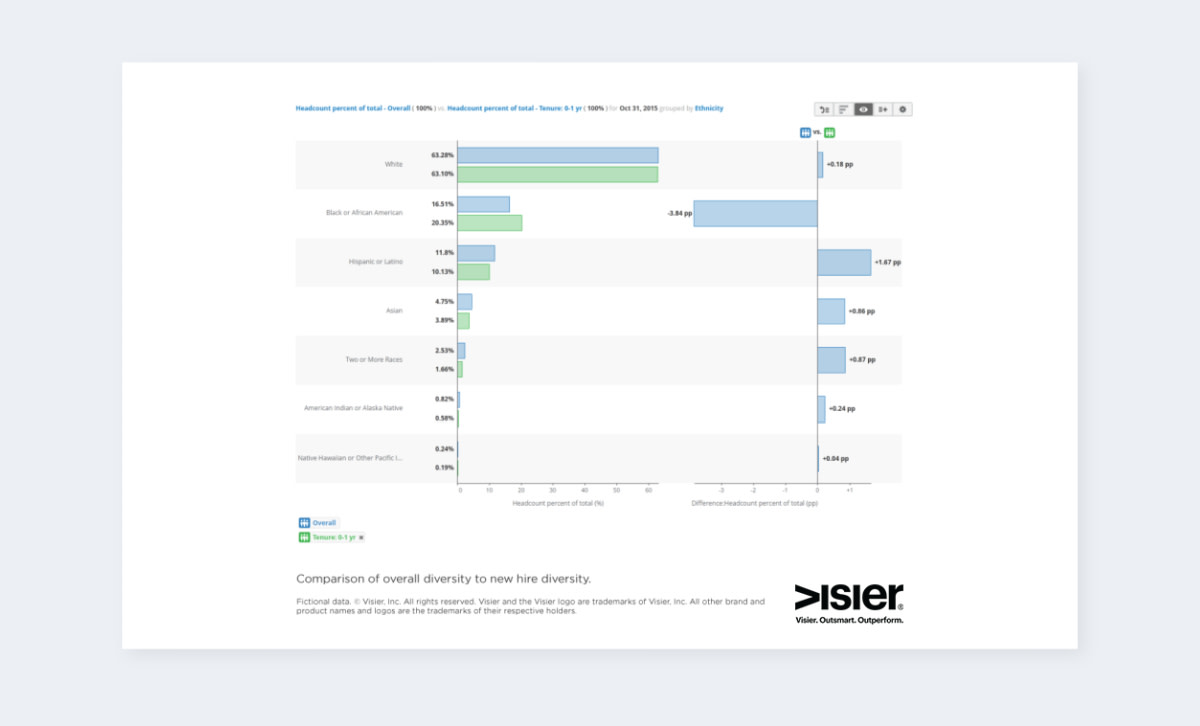5 Benefits of a Data-Driven Recruitment Strategy
Data-driven recruitment is key to finding and retaining top quality talent and tell if your recruiting process is working effectively.

This post is part of our Data-Driven Talent Acquisition Strategies series.
Companies cannot hire fast enough to keep up with their workforce demands and competition is fierce for those high potential people who will deliver innovative solutions or go above and beyond for your customers. Data-driven recruitment is the key to attracting and keeping the right talent needed to meet business objectives—and hiring them at the right price.
The recruitment process is a treasure trove of data that—when mined carefully—reveals important information on whether or not a candidate will be the high performing employee your organization is looking for. It’s the difference between making decisions on gut feeling and making them based on facts.
So what is holding recruiters back from taking a more scientific approach?
First, the technology. Applicant Tracking Systems (ATS) can be great for sorting through applications, tracking candidates through the hiring process, and getting data such as time-to-fill and cost-of-hire. However, it’s usefulness to recruiters stops at the point of hire. From this point, data on hired employees are kept in other systems, making it difficult to get a big picture view of the long-term success of a hire. It also limits the recruiting team’s ability to find candidates who share the attributes of a high performing employee. In fact, some ATS may even eliminate suitable candidates from the pipeline if their job experience doesn’t exactly match what’s stated on the job description.
Second, the data is siloed. As mentioned above, all the valuable data recruiters need is contained within several different systems, and it takes a long time to collect and organize all this information. Without this data, you won’t be able to tell if your recruiting process is working effectively — or if not, why not. Any stalls in the process can backfire and cause you to lose a potentially great employee.
Third, forecasting ability is limited. Recruiters need a clear vision of hiring plans to help them determine when is the right time to hire talent. These plans should be based on historical data and optimize the spend on recruiting to ensure you’re hiring at the right cost as well. Without better technology and all employee data available in a single system, recruiters will be hard-pressed to deliver the optimal headcount needed to deliver on business goals.
What data-driven recruitment looks like
What the recruitment team needs is a seamless way to connect all employee data—from sourcing to hire and beyond—and also tie this into their strategic workforce planning. With this complete picture at their fingertips, recruiters can more easily and effectively meet the demands of the organization.
An approach focused on utilizing workforce intelligence—the combination of HR analytics and strategic workforce planning—enables you to answer your most critical recruiting questions with confidence and improve the team’s business impact. Here are a few benefits of this data-driven method:
1. Increase quality of hire
The ability to track new hires across the employee lifecycle helps you discover what makes an effective job candidate — and a bad one. This means looking beyond how quickly someone was hired and if it was at the lowest price possible. Data-driven recruiters dig deep into metrics such as:
Qualified applicants-per-requisition (which indicates whether your sourcing practices are delivering those effective employees)
Resignations and involuntary turnover for less than three months of service
New hire performance by lead source
Top talent characteristics (advanced “in-memory” workforce intelligence applications make it easy to run tailored algorithms to help identify these — otherwise, you can manually calculate using some elbow grease)

2. Predict speed of hire
Wouldn’t it be great if you could provide more accurate hiring time estimates to stakeholders? When properly done, workforce analytics enables you to know with confidence how long it is likely to take to hire for a certain role, including time in each stage of the hiring process. With this information, you can provide more credible timelines to stakeholders. Likewise, this data-driven approach can reveal the bottlenecks slowing down hiring and inform you on the right actions to take to fix them.
3. Improve the candidate experience
The Talent Board’s 2015 North American Candidate Experience Research Report espouses: Organizations are better able to deliver higher quality talent, improve recruitment efficiencies and align more closely with business objectives when the candidate comes first.
While candidate experience has been a hot topic for decades, many organizations still struggle to improve this important part of the hiring process. There are a number of areas recruiters and the talent acquisition team need to work on (the report lists at least 10, which China Gorman does a good job of highlighting in this post), but how do you know which one your company is guilty of?
Analytics bring the factors that impact candidate experience to the forefront, and a workforce intelligence solution can help you quickly measure the effectiveness of each. Whether it’s time since initial contact, time between stages, interviewer name, etc, you’ll be able to tell what’s increasing or decreasing the likelihood of a candidate withdrawing his or her application — and create strategies to decrease the odds of losing strong candidates.
4. Embed diversity into recruiting process
Traditional recruiting methods make it hard to tell whether you’ll hit your diversity targets or ensure equity during the process. Instead of guessing, use analytics to continuously monitor your hiring funnel for important demographic ratios such as gender, ethnicity, and veteran status. This enables you to better track diversity and implement the correct evidence-based programs to increase diversity throughout your pipeline.

5. Deliver on recruiting capacity
Recruiting is a fine balance: over-hiring can create an unnecessary cost burden, while under-hiring can reduce productivity. In order to stay on track, recruiters need fact-based hiring plans that are continuously updated to reflect the most current state of the company. Data-driven workforce planning, done in collaboration with Talent Acquisition and Finance, enables recruitment to create more accurate hiring plans, ones that use forecasts based on historical rates for factors such as employee turnover, internal movement between departments, and hiring success.
In addition, this type of planning, which incorporates data from workforce analytics, provides a full picture on spend. You’ll know instantly if you’re overspending on recruiting — or not spending as effectively as you can — because you can easily compare the total costs of activities such as internal, agency, and RPO recruiting.
Positioning the recruitment team for success
If you’re just starting your data-driven journey, you may be using spreadsheets and generating reports from various systems in order to find the information you need to strengthen your recruiting process. This can be a long and tedious process, but enables you to take advantage of the power of analytics. However, if you want to truly build a sophisticated analytics function for recruitment, consider investing in new technology that will make it faster and easier to get to the critical data you need.
Cloud-based HR analytics solutions offer the complete end-to-end view needed to not only monitor your entire recruiting pipeline (and identify any bottlenecks), but also pull all the historical information on top-performing employees into a single place, enabling you to hire better and faster, and also get ahead of business demand.
Whatever method you use, remember that analytics is not a “one-and-done” process. In order for recruitment to be successful, you must continuously look for ways to improve hiring. Analytics enables you to confidently double down on your strengths and eliminate the areas where you’re weakest so you can meet every talent need of your organization.


